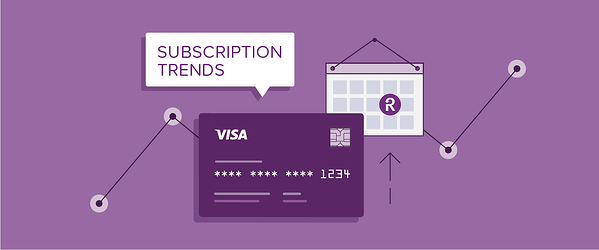“...As a Service” -- It’s Not Just for Software Anymore

These days, software as a service, or SaaS, is the most common way of selling software to both businesses and consumers. It’s easier than shipping physical packages, more cost-effective, and provides a variety of other benefits. Salesforce—one of the most highly valued cloud computing companies in the world, with a market cap of $56.5 billion at today’s writing—staked the future of their entire business on the SaaS model. Back in 1999, the company accurately predicted that their customers didn’t want or need on-premises software. Other software companies followed suit and made the transition to the SaaS model. The subscription model worked, gained traction, and took off.
Today, the subscription model is being used in a wide range of industries. From airline travel to designer jewelry to beauty products and dog treats—the subscription model works to monetize any number of products and services. It has certainly been a boon to software—why not hardware too?
Why not indeed? Apparently, Cisco Systems—that giant manufacturer of networking hardware—has asked themselves this very question. They’ve recognized that their business model is changing, with more customers and prospects choosing to “rent” computer services from companies like Amazon Web Services or Microsoft Azure than buy and manage the hardware and peripherals themselves. Because of this, there’s less demand for the kind of system hardware (servers, routers, and switches) that Cisco makes for corporate data centers. This hardware is also not being upgraded as often. And, new competitors in the market are offering less expensive products. Unsurprisingly, this has had an effect on Cisco’s bottom line—one that’s not gone unnoticed.
However, there’s another part of Cisco’s business that’s growing and doing very well: their products for security and collaboration, all of which have a subscription aspect. For example, Cisco’s Meraki office Wi-Fi products include a web-based management service which IT managers use to get offices up and running quickly—without ever actually touching the equipment themselves. Cisco's collaboration and security products are also often sold with a subscription component. For example, Cisco owns Webex which users pay a monthly fee to access.
This transition to a subscription model began under Cisco’s previous CEO but the strategy is continuing with the current CEO, Chuck Robbins, who wants to apply a subscription model to additional products—including hardware such as switches. Cisco switches are ubiquitous in data centers, and this business is worth around $15 billion per year. Combining that hardware with a cloud-based management service could, according to Robbins, smooth out some of the extremes of their business’ boom-and-bust cycles. This same strategy is what led Cisco to acquire Jasper, an internet-of-things (IoT) services company, for $1.4 billion.
Companies looking to stay ahead of the curve in terms of technology and monetization models would do well to pay attention to the expansion and innovation in the world of IoT. And they should have a subscription management platform that will support and grow the subscription piece that underpins many IoT strategies. To learn more about Recurly, talk to a Recurly expert at (844) 732-8759 or sign up for a demo below.


